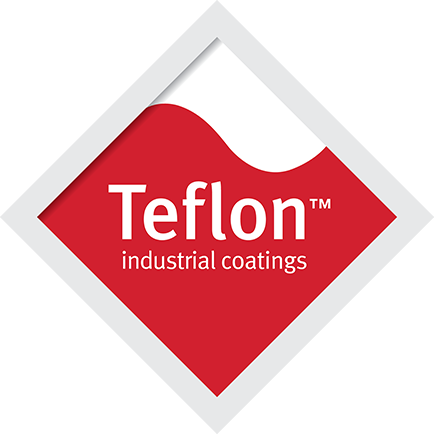
 The Teflon™ 420G line is used primarily in the food processing industry because of its excellent release qualities. Compared to a competitor’s FDA conforming one coat, the Teflon™ 420G line has several advantages over the competition, including better release, a lower coefficient of friction, and higher abrasion resistance. Reverse engineering of the coatings demonstrated similar chemical components of both our coating and the competitor’s, however, Teflon™ coatings also have a higher fluoropolymer to resin ration when compared to the competitor’s coating. These test results show that Teflon™ 420G coatings outperform the competition and are a long-lasting solution in the food processing industry.
The Teflon™ 420G line is used primarily in the food processing industry because of its excellent release qualities. Compared to a competitor’s FDA conforming one coat, the Teflon™ 420G line has several advantages over the competition, including better release, a lower coefficient of friction, and higher abrasion resistance. Reverse engineering of the coatings demonstrated similar chemical components of both our coating and the competitor’s, however, Teflon™ coatings also have a higher fluoropolymer to resin ration when compared to the competitor’s coating. These test results show that Teflon™ 420G coatings outperform the competition and are a long-lasting solution in the food processing industry.
| Test | Test Description | Teflon™ 420G Line | Competitive Coating | Performance Quality Displayed |
|---|---|---|---|---|
| Contact Angle | Measures the angle made between the coating surface and a drop of water. Higher contact angles mean better release. | 97.1 | 93.4 |  |
| Static Coefficient of Friction | A coated panel is pulled under an aluminum plate and a machine (designed to run ASTM D1894) records the force. Alower coefficient of friction means less force resisting movement between two surfaces. | .160 | .202 |  |
| Kinetic Coefficient of Friction | A coated panel is pulled under an aluminum plate and a machine (designed to run ASTM D1894) records the force. Alower coefficient of friction means less force resisting movement between two surfaces. | .107 | .134 |  |
| Taber Abrasion | Involves rubbing sandpaper in circles on the coating and then comparing how much coating wore off. A lower score means higher abrasion resistance. | .073 | .075 |  |
Download Marketing Material (PDF)